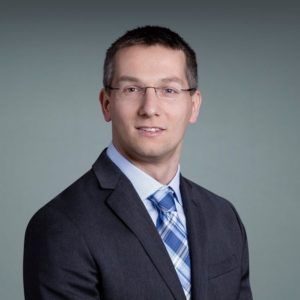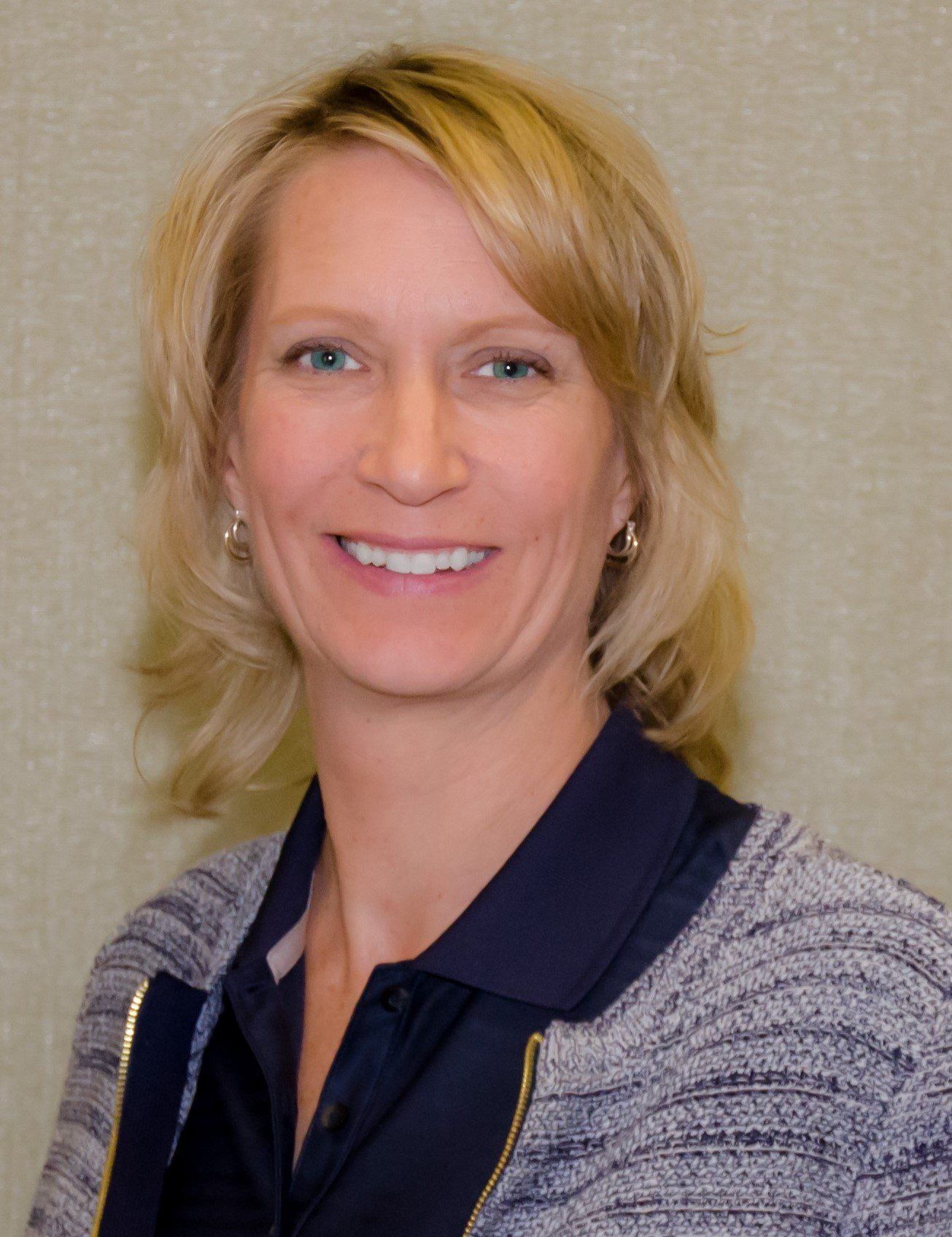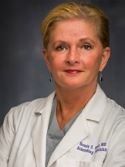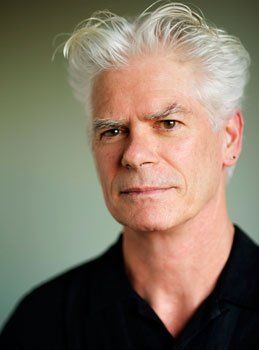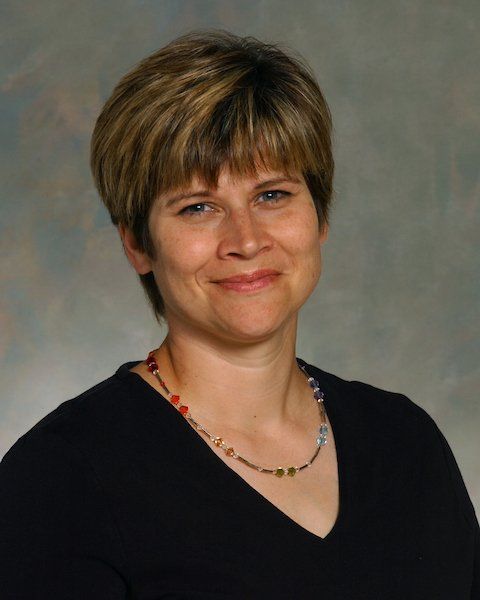NAMTPT 2021 Conference
The NAMTPT ZOOM Conference NCBTMB Approved for CE event was held on Friday, October 8, 2021 and Saturday, October 9, 2021 9am to 5pm Central Standard Time, USA
"Eliminating Myofascial Pain and Dysfunction: New Horizons for Understanding and Treatment"
In this world-wide broadcast, live, interactive Zoom webinar, the world's leaders in the treatment of and understanding of myofascial pain, myofascial dysfunction and Fibromyalgia will share cutting-edge treatment options with participants.
Registrants will learn from leading experts in the field and will be able to actively participate in manual therapy techniques in the comfort of their own home or office.
** Recordings WILL be available to watch after the event if you cannot attend live. This is a very valuable learning experience, so watching after the event is still a excellent option.
NAMTPT Annual Conference
Friday 10/8/2021 through Saturday 10/9/2021
Times listed are in Central Standard Time, USA
(Keep scrolling down this page to learn more!!)
Agenda for Friday October 8th, 2021
9:00 am – 9:30 am: Mary Biancalana
Lecture topic: Current Research Updates in Myofascial Pain and Dysfunction
9:30 am – 11:00 am: Shannon Goossen
Lecture Topic: How to Recognize Cervical Instability: An Overlooked Perpetuating Factor of Myofascial Pain and Dysfunction
11:00 am – 12:00 pm: Antonio Stecco, MD
Keynote Address: Fascia in Myofascial Pain Syndrome
12:00 pm – 1:00 pm: Break for Lunch (Keep Zoom Meeting open, camera off)
1:00 pm – 2:30 pm: Renee Hartz, MD
Lecture Topic: New Math and New Anatomy for Non-Traditional Myofascial Evaluation of Knee Pain
2:30 pm – 4:30 pm: Stew Wild
Lecture Topic: Treatment of Somatosensory Tinnitus ~ Hands-on Demo (Registrants are encouraged to have a client with them at this time to practice the hands-on skills)
4:30 pm – 5:00 pm: Review of Key topics and Conclusion of First Day of Conference.
------------------------------------------------------------------------------------
Agenda for Saturday Oct 9th, 2021:
9:00 am – 11:00 am: Mary Biancalana
Lecture Topic: The Shoulder Depressors ~ Hands-on Demo (Registrants are encouraged to have a client with them at this time to practice the hands-on skills.) Don’t Get Depressed When They are Dysfunctional. Advanced Trigger Point Treatment Techniques for Important Muscles in the Shoulder Complex
11:00 am – 12:00 pm: Julie Zuleger, PhD
Lecture Topic: Corrective Movement and Exercise for People with Shoulder Pain and Dysfunction ~ Hands-on Demo (Registrants are expected to be actively participating in this segment. )
12:00 pm – 1:00 pm: Break for Lunch (Keep Zoom Meeting open, camera off)
1:00 pm - 2:00 pm: Janet (Travell) Street
Lecture Topic: 5 Marketing Tips to Fill Your Calendar with Appointments in 2022
2:00 pm – 3:00 pm: Jim Fricton, MD
Lecture Topic: Myofascial Oro-Fascial Pain and the PACT Program
3:00 pm - 5:00 pm: Stuart Hinds
Lecture Topic:
Treatment Techniques For Muscles in the Lower Leg, Ankle and Foot ~Hands-on Demo (Registrants are encouraged to have a client with them at this time to practice the hands-on skills.)
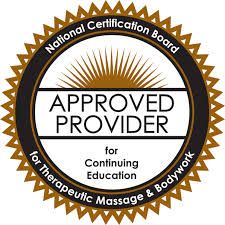
2021 NAMTPT Conference Speakers and Their Lectures
Antonio Stecco MD, Keynote Speaker
Biography:
Assistant Professor at Rusk Rehabilitation, New York University. Physiatrist, President of Fascial Manipulation Association since 2010; Assistant to the President of the International Society of Physical Medicine and Rehabilitation (ISPRM) from 2012 to 2014; President of International Myopain Society since 2020.
Scientific activity devoted to the study of the human fasciae from a macroscopically, histologically and physio-pathologically point of view. He personally made over 100 cadaver dissections for research. From 2007 he organized and personally held theoretical-practical courses about the
Fascial Manipulation method in all the five continents. Author of more than 50 in extensor papers about the fascia. Co-Authors of 5 books and co-author of different chapters of international books published by Elsevier.
Lecture Topic:
Fascia in Myofascial Pain Syndrome
Description: This speech presents knowledge emerging from the pain sciences in a clinically accessible way. It will explore the pathophysiology fascial system and the presence of quantitative, reproducible physical findings in the evaluation and management of chronic myofascial pain and dysfunction. Stiff deep fascia are common sources of persistent nociception that cause persistent nociceptive bombardment and chronic myofascial pain.
Non-pharmacological treatments, like fascial manipulation will be discussed. These techniques aim to decrease fascial stiffness, normalize the threshold of nociceptors, desensitize affected segments, providing long-term pain and symptom relief. It will be presented new diagnostic methods to early diagnose myofascial pain syndrome such T1ρ mapping MR imaging and dynamic ultrasonography.
Learning Objectives:
1) Highlight the gross anatomy and histology of deep fascia (e.g., innervation, mechanical behavior), including the significance of myofascial/myotendinous expansions and its role in proprioception.
2) Describe the pathophysiology of fascia, elaborating on the concept of the myofascial sliding system and its contribution to myofascial pain syndrome.
3) Explain the process and rationale of clinical assessment of the deep fascia tissue as well as the therapeutic advantage provided by plasticity and malleability of fascia.
4) Define the best investigation method to detect if fascial alterations are involved in the clinical condition of the patient.
Mary Biancalana, MA, CMTPT, LMT
Biography:
Mary Biancalana, Owner & Director of Myofascial Trigger Point Therapy for Chicago Center of Myofascial Pain Relief, has excelled in the fitness and education field since 1983. A lifelong athlete and exerciser, Mary possesses a unique blend of skills and training that sets her apart. She holds a B.S. from DePaul University in Teaching Physical Education and a Master’s Degree in Education from Northeastern Illinois University. She also holds four State of Illinois teaching licenses and is an American Council on Exercise Certified Personal Trainer, a Nationally Board-Certified Myofascial Trigger Point Therapist, and a Licensed Massage Therapist.
Hands-on Topic:
The Shoulder Depressors; Don’t Get Depressed When They are Dysfunctional. Advanced Trigger Point Treatment Techniques for Important Muscles in the Shoulder Complex. Pectoralis Minor, Latissimus Dorsi, Teres Major and Subscapularis. Registrants are encouraged to have a client or family member so as to participate and practice the hands-on techniques as shown in this practicum.
Dr. Jim Fricton, MD
Biography:
In addition to his role as a Pain Specialist at the Minnesota Head and Neck Pain Clinic, Dr. Fricton is a Professor Emeritus in the University of Minnesota Schools of Dentistry, Medicine, and Public Health. He was trained in Dentistry at the University of Iowa and in Medical Anesthesiology and Pain Management at UCLA School of Medicine and started the Orofacial Pain Program at the University of Minnesota. He has 40 years of experience in patient care, University teaching, and National Institutes of Health-sponsored research on relieving and preventing chronic head and neck pain and use of health information technology in patient care. With over 100 publications and books with his most recent NIH-sponsored research on Personalized Activated Care and Training (www.PACTforPain.com) that helps health professionals integrate patient self-management training with treatment using a telehealth team and technology.
Lecture Topic:
Myofascial Oro-Fascial Pain and PACT Program
Description of the Course:
Myofascial pain (MFP) is the most common cause of persistent regional pain in jaw, orofacial,head and neck pain population and is characterized by localized muscle tenderness and pain. This presentation will discuss the prevalence, clinical characteristics, personal impact, and health care dilemma associated with myofascial pain of the head, neck and orofacial painregion. The clinical characteristics and underlying etiology of MFP pain conditions will be presented. You will learn how to conduct a risk assessment of patients with pain to understand the risk and protective factors associated with chronic pain is presented. You will learn specific strategies in each realm that can be employed daily by patients to prevent chronic pain and enhance wellness. The concepts of transformative care that include both treatment and training of patients in self-care to reduce risk factors is reviewed. The use of the Personalized Activated Care and Training (PACT) program with Telehealth Coaching with Patient-Centered Technology will be discussed to help you implement and be reimbursed for this training as part of routine care to improve long-term success in managing MFP.
Shannon Goossen, AP, LMT, CMTPT
Biography:
Shannon Goossen, AP, LMT, CMTPT owns a private practice in Jacksonville, FL. She is president of Comprehensive Myofascial Therapy Associates, established in 1996. She teaches nationally about FSM (Frequency Specific Microcurrent) and offers web
based training opportunities through www.FrequenciesthatMEND.com In Florida, Shannon is a Licensed Acupuncture Physician, Licensed Massage Therapist and Certified Myofascial Trigger Point Therapist. Shannon has a bachelor degree in Biology and graduated from Hendrix College in 1986. Shannon graduated from the Pittsburgh School of Pain Management (1997) and from the Classical Acupuncture Institute in 2001. She is board certified by the National Certification Commission for Acupuncture and Oriental Medicine (Diplomate), the Myofascial Trigger Point Therapy National Board, and previously, the previously, the Academy of Integrative Pain
Management (Fellow).
Lecture Topic:
How to Recognize Cervical Instability; An Overlooked Perpetuating Factor of Myofascial Pain and Dysfunction
This workshop will offer a “deeper dive” on the cervical spine structure and function. You will learn the “mystery in the history” of head and neck injuries and why treating the scalene muscles is NOT the “magic cure” for people with cervical instability. You will learn how to ask the right questions, provide safe and effective therapy, collaborate with other specialists, and give a “safe” home program.
Dr Renée S Hartz, MD
Biography:
Dr. Reneé Hartz has over 30 years of experience in many medical modalities including Thoracic Surgery, Cardiac Surgery, Emergency Room, University Medical Education and Myofascial Pain Treatment. She is a passionate and caring medical provider who is dedicated to treating and eliminating muscular (myofascial) pain in a drug-free and surgery-free approach.
Lecture Topic:
New Math and New Anatomy for Non-Traditional Myofascial Evaluation of Knee Pain
Knee pain is traditionally thought to be due to ligament injuries and bursitis. This lecture will describe the interrelationship of the myofascial unit (muscle, fascia, tendons, ligaments and bursae) in causing knee pain. The continuity of muscle groups in the thigh and leg with the bursa and ligaments of the knee will be shown from a surgical perspective.
- Our in-clinic multi-modality treatment of myofascial knee pain will be demonstrated using videos of MD and TrP Therapist working together performing Trigger Point Therapy, including TrP injections.
- This presentation will show a method of safe trigger point injections using a local anesthetic and botanical anti-inflamatory agent.
- The importance here is our combined approach. MD and MTPT working together in the treatment of myofascial pain.
In this 1 hour lecture, Dr Renee Hartz, Medical Director of Chicago Center for Myofascial Pain Relief (CCMPR), will highlight the amazing anatomy of the knee, including a large number of bursa. She will then show, via in-clinic video, examples of hands-on Trigger Point Assessment for muscles that can be causing referred pain into the various aspects of the knee.
Learning Objectives;
- The student will correctly identify key anatomy structures of the knee, including bursa, bone, and muscles.
- the student will understand the collaboration between the Myofascial Trigger Point Therapist and the MD, Physical Medicine and Rehab.
- The student will understand how to best assist a physician for identification of key trigger point structures and muscles so the physician can apply the trigger point injections.
Stuart Hinds, B. Sc.
Biography:
Stuart established his online education website in 2001, which has a large range of online professional development resources to support and extend the skills of remedial massage therapists, physiotherapists, osteopaths, myotherapists, chiropractors and other soft tissue therapists. As a recognised education provider with Massage & Myotherapy Australia and a proud partner of Niel Asher Healthcare, stuart-hinds.com offers trusted, quality educational products that earn you Continuing Professional Education (CPE) points.
In addition to online education courses, Stuart regularly runs training workshops and professional mentoring sessions. At any stage of your career, he can provide quality mentoring to streamline your business and treatment skills.
Hands-on Topic:
Peripheral Nerve Entrapments of the Upper Extremity
This presentation will investigate the Pathophysiology, Assessment and Treatment for common peripheral upper extremity nerve entrapment. Participants will learn appropriate Neuro-dynamic testing to assess and monitor efficacy of Soft Tissue Therapy Treatment. Presentation participants will be able to practice the assessment and treatment modalities relevant to the soft tissue therapists’ scope of practice.
ASSESSMENT AND TREATMENT WILL BE FOCUSED ON THE FOLLOWING CONDITIONS:
Thoracic Outlet Syndrome
Cubital Tunnel Syndrome
Pronator Teres Syndrome
Radial Tunnel Syndrome
Learning Objectives
1.The student will be able to recognise the Neuro-anatomy of the upper extremity and the common dysfunctional patterns related to upper extremity nerve entrapments.
2. Will be able to replicate the Neurodynamic testing procedure to assess sites of entrapment
3.will be able to identify the anatomical variations of these nerve entrapments.
4. Will demonstrate the treatment options for each area as well as identifying the main entrapment culprits for each.
Janet (Travell) Street, BS
Biography
Janet Street is a digital marketing agency owner, and the granddaughter of Janet Travell. She combines her passion for trigger point therapy with her enthusiasm for helping practitioners grow their businesses and reach more people in need of pain relief. Ms. Street is co-founder at The Janet Travell Foundation, and an honorary member of NAMPTPT. She edited and designed a biography of Dr. Travell, “Janet Travell, M.D., White House Physician and Trigger Point Pioneer,” written by her mother, Virginia Street. Janet and Virginia currently post articles and family history of Dr. Travell on the Janet Travell MD Facebook page.
Lecture Topic:
5 Marketing Tips to Fill Your Calendar with Appointments in 2022
Topic Introduction: Would you like to grow your trigger point therapy practice, but you’re not sure how to consistently get more clients? Have you spent time and money on marketing without seeing results? In this presentation, we’ll do a health check on your current marketing strategy to find out what’s working and what’s not. Then we’ll discuss five simple tactics that you can implement to fill your appointment calendar with clients in your local area who are in need your services — and create a road map for growing your practice.
1. Optimizing your social media profile on Facebook and LinkedIn
2. Generating leads on Facebook with paid ads
3. Building authority and trust with a blog and social media content
4. Growing your online presence with a website, Google My Business listing and local business directories
5. Creating a sales funnel to build your email list
Stew Wild, LMT, CNMT, CMTPT
Biography:
Stewart Wild has always worked in the health field, starting in New Zealand as a Hematology and Blood Bank laboratory technologist. He took up therapeutic massage in 1994 after experiencing the benefits of sports massage during his cycling, running, Ironman triathlon days. Later, he trained in both the St John and American versions of Neuromuscular Therapy, before becoming a Certified Manual Trigger Point Therapist.
Stewart is the founder of Myopain Solutions, based in Dedham, Massachusetts. The neuromuscular therapy approach addresses all aspects of muscular dysfunction; trauma, overload, overuse, imbalance, asymmetry and myofascial trigger points. Complementary to this manual therapy is postural and movement rehabilitation, optimization of neurophysiology, pain science education and the identification, modification or removal of perpetuating factors.
Stew believes it is important to combine an ongoing clinical practice along with teaching for Myopain Seminars. He especially enjoys investigating those hard-to-solve cases from a soft tissue perspective.
Hands-on Topic:
Treatment of Somatosensory Tinnitus
Introduction to ‘Assessment and Treatment of Somatosensory Tinnitus’
Tinnitus is experienced by between 10 and 15% of adult Americans. As a sufferer myself I am particularly interested in this strange and puzzling condition, as many of you may be too. The problem with tinnitus is that the pathophysiology of it is unclear. There appears to be no official definition of tinnitus. Most traditional therapy aims to reduce the tinnitus-associated distress rather than the tinnitus itself. As well, there is a lack of funding for research.
I have a 2019 paper from Frontiers in Neuroscience entitled ‘Why Is There No Cure For Tinnitus?’. In my presentation I will offer a different opinion. After correspondence with Dr. William Teachey MD from Virginia Beach VA, I believe his opinion that 50% of tinnitus cases are not somatosensory and 50% are. Of the 50% that are, half of them will get somewhat better and half of them will get substantially better. Somatosensory tinnitus (ST) describes tinnitus symptoms originating in muscles of the neck, jaw or shoulder, and adjacent structures.
Over the years I have worked with tinnitus experts Dr. Teachey and Dr. Robert Levine of Mass General Hospital (MGH). Both have recently retired, leaving a void of medical interest and research. In my presentation I will outline the current allopathic standing of tinnitus and then describe four case studies of people I have treated for somatosensory tinnitus. I will describe in detail the techniques I used to help these people.
Julie Zuleger,PhD
Biography:
Julie is an Assistant Professor at the University of Wisconsin Oshkosh in the Department of Human Kinetics and Health Education. She has extensive training and interest in human movement, anatomy, kinesiology, and corrective exercise therapies. Julie is a Certified Strength and Conditioning Specialist, a retired ATC, Board Certified Myofascial Trigger Point Therapist, Certified Yoga Teacher, Performance Enhancement Specialist, Certified Personal Trainer, Licensed Massage Therapist, and holds a Ph.D. in Education.
Active Participation Expected:
Corrective Movement and Exercise for People with Shoulder Pain and Dysfunction
In this two-hour demo and lecture, Dr. Julie Zuleger, faculty instructor for the University of Wisconsin at Oshkosh, Health Sciences Department, will take us through active participation the range of motion activities that are necessary to maintain full healthy function for all the muscles in and around the shoulder complex. Registrants should be prepared to participate actively in the activities for the whole two hours.
This course is designed to be a compliment to the Hands-on practicum taught by Mary Biancalana during this same conference.



